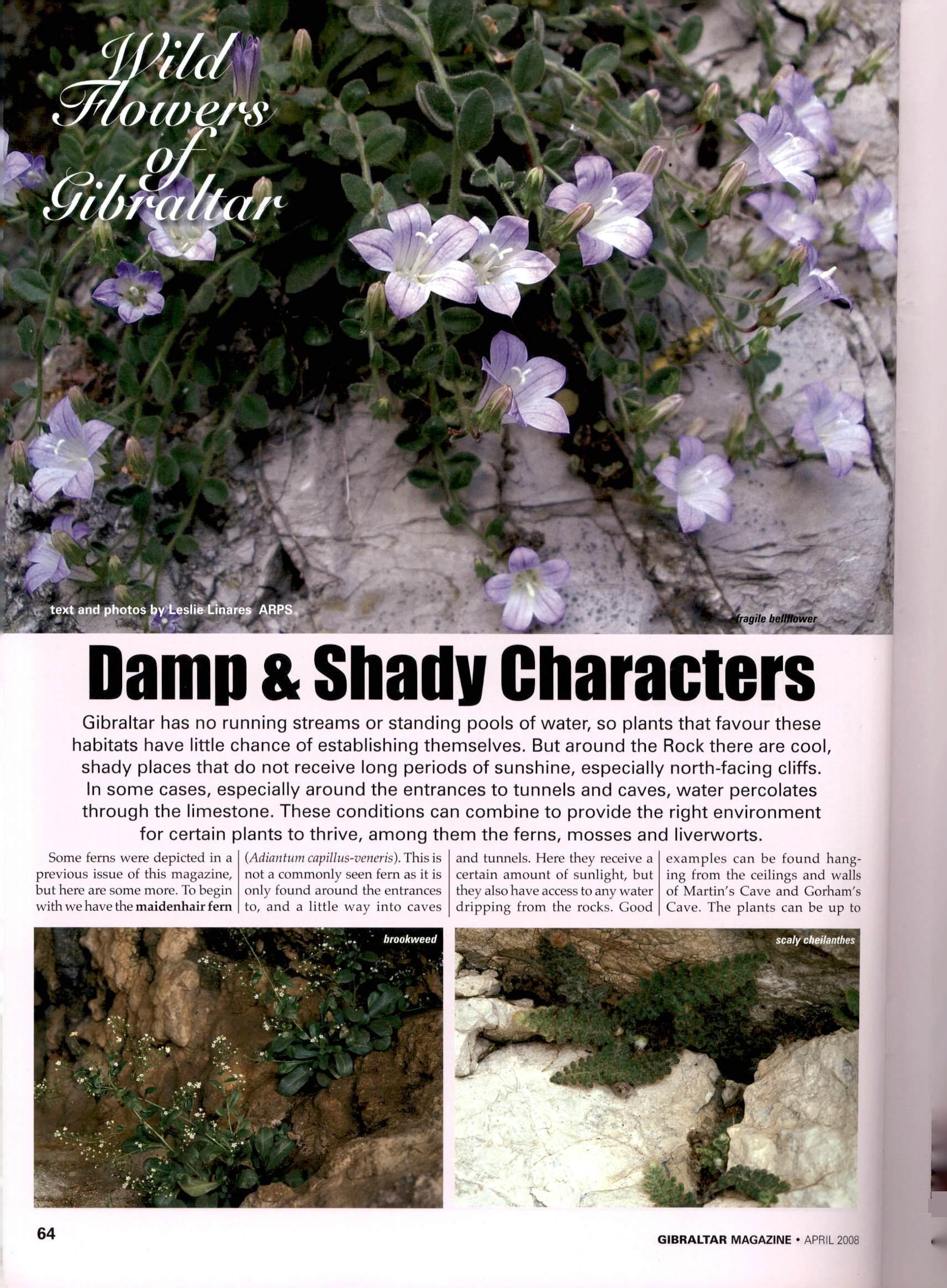
2 minute read
Damp & Shady Characters
Gibraltar has no running streams or standing pools of water, so plants that favour these habitats have little chance of establishing themselves. But around the Rock there are cool, shady places that do not receive long periods of sunshine, especially north-facing cliffs. In some cases, especially around the entrances to tunnels and caves, water percolates through the limestone. These conditions can combine to provide the right environment for certain plants to thrive, among them the ferns, mosses and liverworts.
(Adiantum capillus-veneris).This is not a commonly seen fem as it is only found around the entrances and tunnels. Here they receive a certain amount of sunlight, but they also have access to any water examples can be found h ang ing from the ceilings and walls of Martin's Cave and Gorham's Cave. The plants can be up to
30cm long.
A much more common species of fern is the Jersey fern (Anogramma leptophyila). This is found on old,damp and shaded walls all over the Rock,including the town area. Many can be seen on the walls and steps within the Alameda Gardens. Some may also be found in the Upper Rock,shelter ing in nooks and crannies among the limestone outcrops.The plants are generally quite small, but can range from 5 to 20cm tall.
Perhaps the rarest of the lo cal ferns are the western black spleenwort (Aspletuum onopferis) and the scaly cheilanthes (Cheilanthes vellea). The first is only found along Mediterranean Steps, and here it grows in the damp soil found among the roots of the dwarf fan palm or "palmito". Here the fern receives no direct sunlight as it is shaded by the palm's dense foliage. The fronds range from 10 to 20cm in length. The second fern is only found on the reddish limestone cliffs on the west of the Rock that range from Devil's Gap to Royal Anglian Way. These ferns grow from crevices in the limestone, and lie flat against the rock.The fronds, which range from 5 to 20cm in length, are cov ered in yellowish hair-like scales, especially on the undersides.
Two flowering plants that pre fer this type of habitat are the soft or fragile bellflower {Campanula velutina) and the cliff hanger (Chaenorrhinum villosMn).The bellflower may be found throughout

Natnral History
Gibraltar where the conditions are right, including on the city walls. To them these arejust particularly smooth limestone cliffs!
The stems are quite delicate and break at the slightest pressure. The flowers are about 1.5cm long, and can range from blue-violet to almost white.
Good places to see them are the walls around the two tunnels below Parson's Lodge Battery,the road leading down to Catalan Bay, and the cliff faces surrounding North Gorge, where their survival is threatened by current develop ments there. The cliff hanger is a rarer plant, but is often found growing together with the bellflower. The flowers usually hang from walls and rock-faces, and are 1 to 1.5cm across. They grow well on the north side of Charles V Wall,and the cliffs above Mediter ranean Steps.
Ofspecial interest is the brookweed {Samolus valerandi). The habitat of this species is, as the name suggests, the banks of streams. Here in Gibraltar there are no streams,but this species has found a niche on the damp walls of caves, especially at Gorham's Cave where it has its strong hold. These plants were prob ably around when Neanderthals roamed the area! The excavations taking place at this cave do not pose any threat to the survival of the species. The flowers are quite small: up to 4mm across; while the plants can be anything from 10 to 40cm tall.










